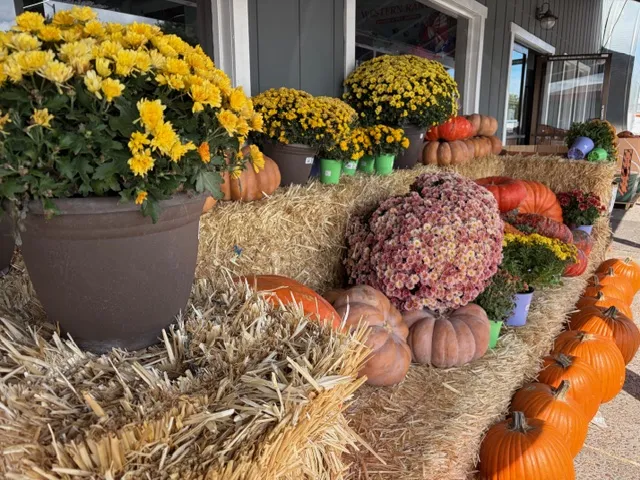Blog by Michelle Davis

We are full on in Pumpkin Season, in which many beverages, entrees and desserts are made with the fruit. Pumpkins originated in Mesoamerica close to 10,000 years ago, though its name “pumpkin” comes from the Greek word “peopon”, translating to “large melon”. Pumpkins are a squash in the family Cucurbitaceae. They were often grown as part of the Three Sisters planting system: corn, beans and squash planted together. Pumpkins helped shade the shallow corn roots, retaining moisture in the soil and with their leaves, prevented weeds. This plant family includes cucumbers, watermelons and hundreds of kinds of melons, gourds and squashes. There are actually over 300 different kinds of pumpkins alone. The US is not the biggest producer. That honor goes to Asia. The largest producer in the US is Illinois. Morton, Illinois, is known as the Pumpkin Capital of the World and is home to Libby’s, the largest pumpkin canning company in the US. The pumpkin variety they have been canning since 1929 is the Dickinson.
Every part of a pumpkin is edible, from the seeds all the way to the stem and leaves and even the blossoms. Pumpkins come in many colors and sizes. White pumpkins are often called ghost pumpkins. One mini version is called Baby Boo. Lumina is one variety of the larger white pumpkin. Blue pumpkin varieties include Queensland Blue, Blue Bayou and Blue Moon. The rinds are blue, but the meats are orange and delicious. Cinderella’s red pumpkin coach was inspired by the Rouge Vif d’Estampes. It is flatter, squatter than the traditional round orange pumpkin and is a favorite of French chefs. A black pumpkin named Black Futsu is from Japan and is used for many traditional dishes, including tempura. Some pumpkin varieties are striped and others are warty and some are both. There are brown pumpkins, teal pumpkins, green pumpkins, yellow pumpkins and pink pumpkins (Passion Pink, Porcelain Doll, Moranga) appropriate for October’s Breast Cancer Awareness Month. Pumpkins can fit in your palm or grow to truly huge proportions. The latest record was set about 2 weeks ago in the UK, where two brothers’ pumpkin weighed 2,819 pounds and had a circumference of over 21 feet. The two brothers, Ian and Stuart Paton, grew the behemoth in a computer-controlled greenhouse and said the pumpkin needed 130 gallons of water a day. This is not surprising as pumpkins are 92% water.
I like using the intact (not carved) pumpkins for seasonal décor and then roasting them. I just learned a faster way of getting them ready to roast. Use a short, thin, serrated knife to punch a hole midway up the pumpkin and slowly and carefully saw the pumpkin horizontally all the way around. Take each half (seeds and all) and place cut side down on a baking sheet tray, add a little bit of water to the tray and roast in a preheated oven at 350 degrees. Check every 20 minutes to see if the pumpkin flesh easily gives when touched. Medium-sized pumpkins could take about 45 minutes to an hour total. Scoop the seeds out and set aside and then scoop the flesh into a blender and blend until smooth. Your pumpkin pulp is now ready for whatever culinary creation you desire – soup, pie filling, etc. Just add your spices or herbs. Roast the seeds again separately with your favorite herbs or spices. They are also delicious.
We are lucky to have 3 Travel Mad Mum blog-recognized pumpkin patches in Solano and in Yolo counties to pick out your décor/meal: Cool Patch Pumpkins, 6150 Dixon Ave W, Dixon next to the WORLD’s largest corn maze, Dave’s Pumpkin Patch (Vierra Farms), 3010 Burrows Ave, West Sacramento and Bobby Dazzler’s Pumpkin Patch, 23300 Co Rd 99D, Woodland. When choosing a pumpkin to pick, make sure the stem is securely attached to the pumpkin and is firm. Ensure the bottom of the pumpkin is also solid and not soft. Thump on the pumpkin – it should sound hollow. Go out and make memories!
